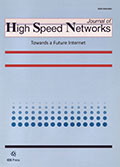Authors: Balzano, Walter | Murano, Aniello | Stranieri, Silvia
Article Type:
Research Article
Abstract:
Inter-vehicular communication is a very hot topic in the most recent research environment, since the management of traffic information is an important issue in order either to minimize the number of accidents, or to optimize the road safety. The most known traffic control systems are the VANETs (Vehicular Ad Hoc Network), a decentralized structure by which vehicles are able to communicate to each other, by exploiting some OBUs (On Board Units), which actually realize signals transmission. The main idea of this work is to transform the decentralized structure, typical of the VANETs, into a centralized one. In this way,
…we can obtain many advantages, such as a simpler clustering process: this last is a very important operation concerning the organization of some objects in more groups, according to some criteria which can improve the performances of a system, in general. In this case, we would exploit this notion, in order to reduce a phenomenon, known as “broadcast storm”, which is very frequent when we speak about VANETs and causes most of the collisions occurring during the communication between vehicles. According to this goal, we provide, in this work, a non-exclusive clustering algorithm, by exploiting the simplicity and the expressive power of Prolog programming language. Moreover, in this work we also underline the utility of equipping this communication framework with a central unit which, on one hand, has a full knowledge of the network topology, on the other hand, it is able to collect, manage, store, and process the most important recovered data and, consequentially, to make some significant statistics. Finally, we evaluate some improvement possibilities of the described model, by integrating it with some of the most common electronic devices, which can rise its performances.
Show more
Keywords: VANET, broadcast storm, network topology, Prolog, clustering
DOI: 10.3233/JHS-170568
Citation: Journal of High Speed Networks,
vol. 23, no. 3, pp. 225-236, 2017
Price: EUR 27.50





